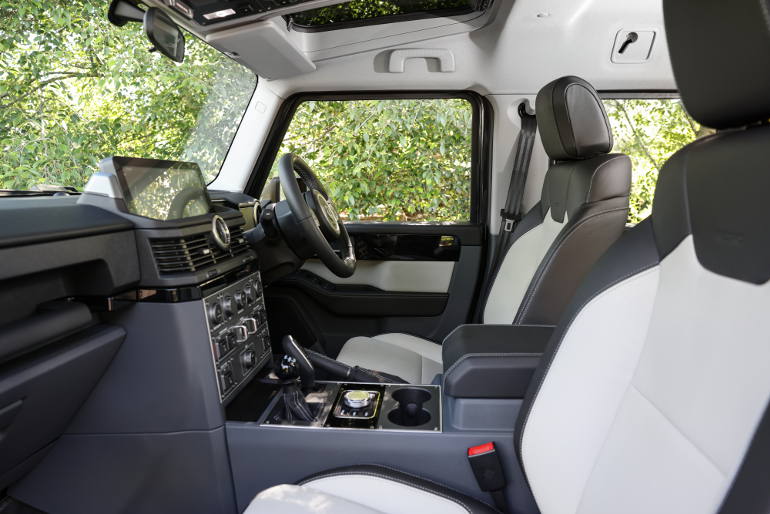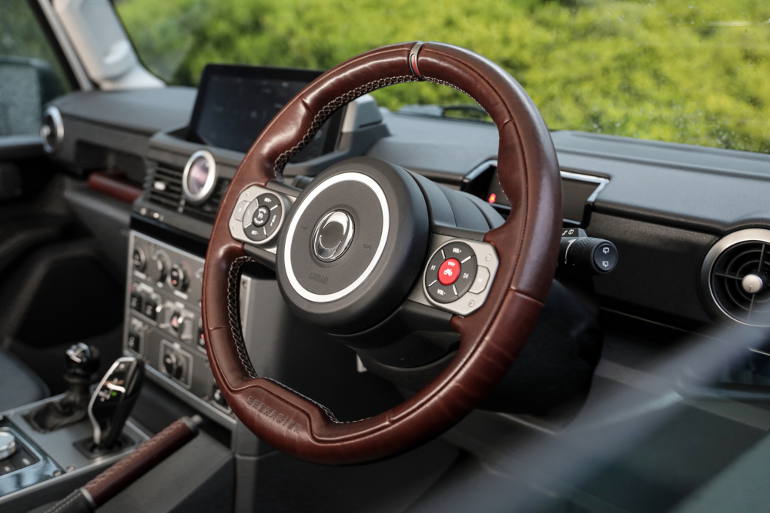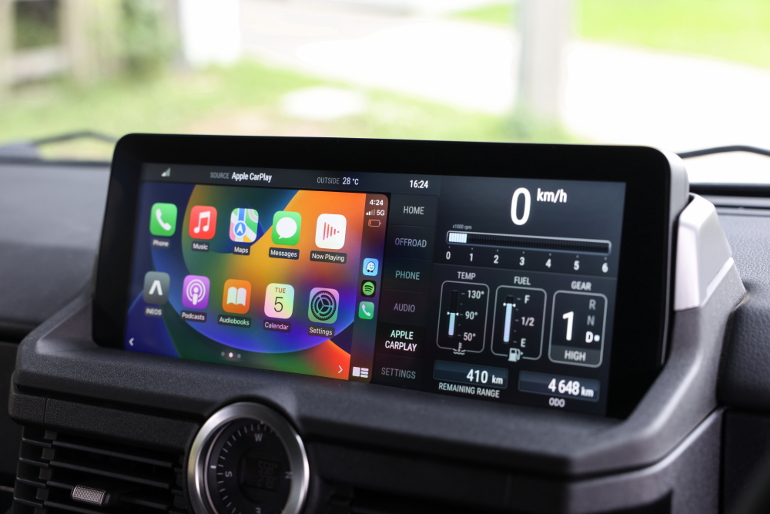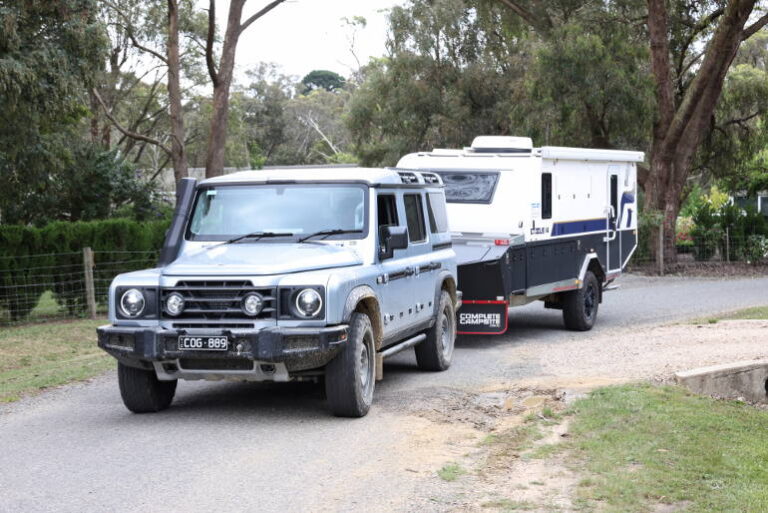The Ineos Grenadier offers something quite unique in today’s market, as a purpose-built 4×4 with old school mechanical parts, classical design, and modern technologies.
It draws comparison to iconic vehicles like the Toyota LandCruiser 70 Series, original Land Rover Defender, Jeep Wrangler, and Mercedes-Benz G-Class, but is very much its own beast, conjured from the proverbial blank sheet of paper to fill a gap in the market.
Ineos Automotive is a new entity, but Ineos, a British chemicals giant with investments in sports teams, fashion brands and hygiene products, reported a $65 billion turnover in its last financial report. The new company division certainly has resources at its disposal.
Doubly so given the aforementioned market gap was identified by billionaire Ineos chairman and founder, Sir Jim Ratcliffe, a known adventurer keen on “a 4×4 no-one’s building anymore” (his words).
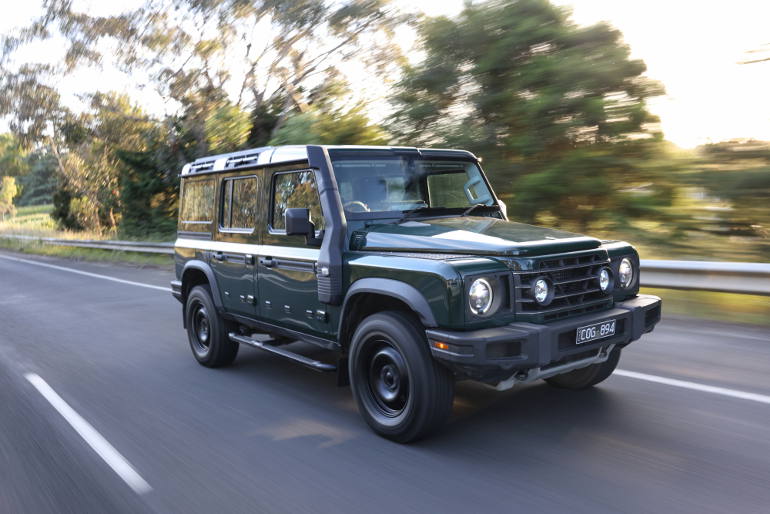
The Grenadier has been in development since 2017 under the engineering eye of Magna – assembler of the Mercedes-Benz G-Wagen – and is built at a French plant acquired from Mercedes-Benz. But it really could have been tailor-made for Australia, where there’s inexhaustible demand for overland exploration adventure vehicles.
And while the first batch of 800 Grenadiers have mostly gone to private order holders, Ineos Automotive has its eye on the fleet market longer term, seeking around 2,000 annual sales with an even split between wagon and pickup.
The Grenadier’s launch range comprises a 2-seat Utility Wagon setup for commercial applications, and a 5-seat Station Wagon passenger version for $1,000 more. The Quartermaster pickup and cab chassis hit the market before mid-2024.
Make no mistake; the Grenadier doesn’t come cheap. A base price of $109,000 (Utility Wagon) or $110,000 (Station Wagon) before on-road costs means it’s $30,000 more than a LandCruiser 70 Series but around the same money as a flagship Wrangler or base Defender.
The Grenadier is exempt from luxury car tax after Ineos sought and received at ATO private ruling.
While the design is all about function with short overhangs, roof-side bars, bash plates, protective mouldings and steel wheels, it has timeless style with plenty of original Defender and G-Wagen Professional about it. Not to mention some cool colours with evocative names like Britannia Blue, Eldoret Blue, Sela Green and Sterling Silver, and contrasting roof options.
You’ll stand out from the crowd, and it feels ‘bespoke’ in a way that no other competitor does.
Climbing inside is a bit like stepping back in time, but not in an always unwelcome way. The centre 12.3-inch touchscreen is modern and very BMW in layout, and the ergonomics are decades ahead of the old Defender. It has Apple CarPlay and Android Auto, but also a rather small rear-view camera.
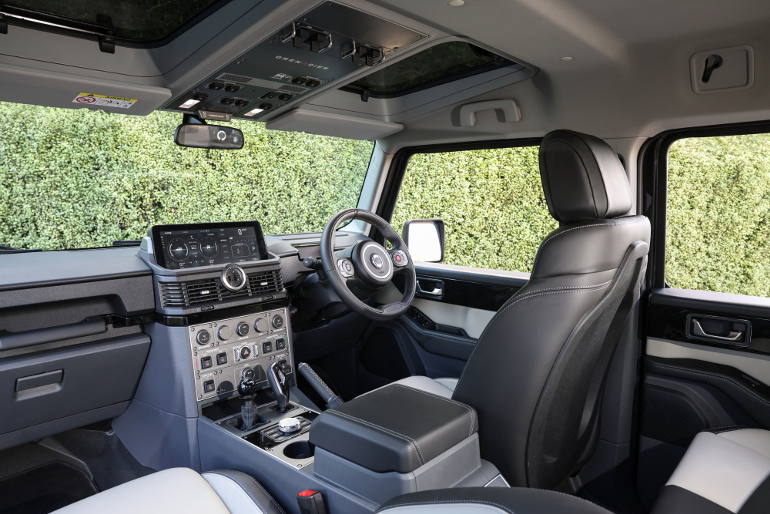
But it also has a dash panel full of chunky tactile dials and switches, a manual handbrake, a mechanical gear stick to engage low-range, and washable floors with drainage points. There are even buttons for diff locks and auxiliary power in the roof between optional pop-out safari windows.
It feels well built and sturdy, a real balance of new and old. There are flaws — principally the lack of driver instruments, with the speed readout on the centre touchscreen — but you have to give the Grenadier credit for being different to everyone else on the market.
The second-row seats (when fitted) have air vents and USB-C ports, big side windows and plenty of space for large adults, and the 1152L cargo area is big and boxy behind the 30:70 split rear doors with old school mounted spare wheel. Meanwhile the Utility Wagon has two seats, can be had with a steel cargo barrier, and a full-length flat floor with 2088L worth of load space.
With no brand history of its own, Ineos is keen to talk up its suppliers to lend credibility. These include premium companies such as Carraro (beam axles), Tremec (transfer case), Brembo (brakes), BMW (engines), ZF (transmissions), Eibach (coil springs), and Recaro (seats).
The two engines on offer are 3.0-litre BMW inline sixes, albeit recalibrated for more punishing low-speed driving conditions. The petrol makes 210kW and 450Nm, whereas the diesel offers 183kW and 550Nm, this peak torque figure coming on at a low and tractable 1,250rpm.
Each engine is mated to an eight-speed automatic as standard, and full-time 4×4 with a locking centre diff and a (2.5:1) mechanical low-range engaged by a floor-mounted stick that needs a firm shove like an old farm truck.
Both offer good punch for something this broad and heavy, with 0-100km/h times of 8.8 seconds for the petrol and 9.8 seconds for the diesel, the latter of which is expected to account for at least 80% of sales for understandable reasons. They’re widely used engines, and both smooth and powerful.
For off-roading and towing (3,500kg braked-trailer capacity) diesel is the go-to-choice. Weighing around 2.7-tonnes kerb and as aerodynamic as a house brick, it’s never going to set economy standards, but the diesel’s claim is 10.5L/100km compared to 12.6L/100km for the petrol. Both have a 90-litre tank and AdBlue tanks.
For what it’s worth, the trip computers at the launch event read 15L/100km (diesel) and nearly 20L/100km (petrol), but these vehicles were subjected to hard off-road driving and towing throughout, so average driving will be much closer to the claim.
It’s all very refined at driving speeds aside from the all-terrain tyres’ tarmac drone, and feels exceptionally sturdy and solid. No 4×4 with a ladder frame, solid axle and lots of articulation is going to carve up corners, but its handling was acceptable with and without a 2.2-tonne trailer.
The recirculating ball hydraulically-assisted steering is old school and mechanically simple, but by today’s standards feels slow and a little heavy. You can wobble the wheel from centre and won’t get much of an immediate response, which is less great on-road than it is off it.
We can verify its abilities off the beaten path, having negotiated some steep clay trails without a fuss. It didn’t just walk over everything in its path, it did so in stately comfort without a rattle.The touchscreen also shows you an altimeter, tyre pressures/temperatures, and gearbox health.
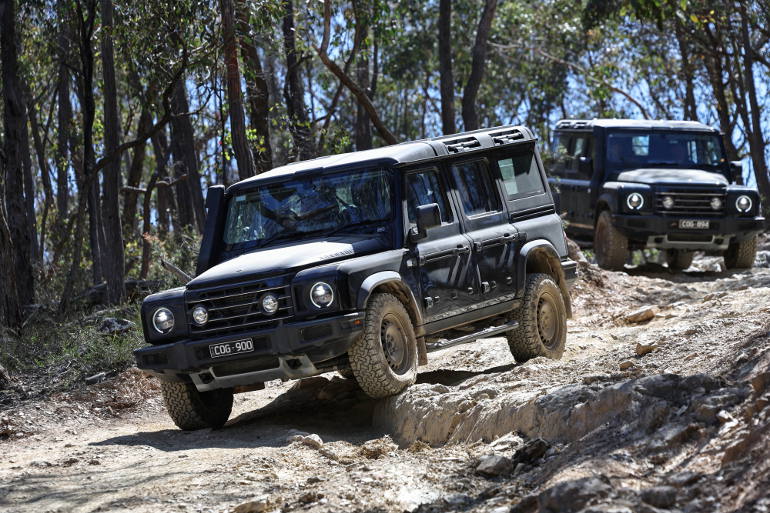
In terms of specs it has ground clearance of 264mm, an approach angle of 35.5 degrees, and an 800mm wading depth. It has five-link suspension front and rear, beam axles, and a 13.5 metre turning circle. Surprisingly, locking front and rear differentials are an optional extra.
That 3,500kg towing capacity is legitimate as well, given there’s also a 350kg trailer nose weight and a 7,000kg gross combined mass, meaning you can be around the maximum 3,550kg GVM (payload of 830kg-930kg) while towing the maximum trailer weight.
One potential stumbling block is the query around safety. The Grenadier hasn’t been tested by ANCAP and likely won’t be. Safety features include six airbags and ISOFIX, but there’s no autonomous emergency braking, lane-keeping aid, blind-spot monitoring, or adaptive cruise control (it has regular cruise control) here.
Ineos says it wanted to minimise the number of electrical components, but the absence of common driver-assist aids does stand out today.
In warranty terms Ineos provides five years with unlimited kilometres, with service intervals of 12 months or 15,000km with capped price servicing averaging around $800 a visit. The company sells its vehicles via an agency model, with 29 showrooms in major capitals and many regional centres. The company has flagged exploring partnerships with remote private repairers.
While many Grenadiers will be sold as status symbols, beneath the stylish design there’s some real substance and serious capabilities. The mining sector is already kicking the tyres, particularly on the Utility Wagon and Pick-Up/cab chassis. It’s hardly going to conquer the mighty ‘Cruiser in the outback overnight, but it might make a few inroads.
Ineos Grenadier MSRP:
- Utility Wagon: $109,000 (petrol and diesel)
- Station Wagon: $110,000 (petrol and diesel)
- Trialmaster Edition: $13,000 extra
- Fieldmaster Edition: $13,000 extra
Colours:
- Scottish White: Standard
- Magic Mushroom: $995
- Eldoret Blue: $995
- Britannia Blue: $995
- Sela Green: $995
- Inky Black: $995
- Sterling SIlver: $1,360
- Shale Blue: $1,360
- Queen’s Red: $1,360
- Donny Grey: $1,360
- White or black roof: $1,865
Trialmaster adds:
- Front and rear diff locks
- BF Goodrich KO2 all-terrain tyres
- 17-inch steel wheels
- Raised air intake
- Exterior utility belt
- Rear access ladder
- Front parking sensors
- Heated mirror and washer jets
- Puddle lamps and door lighting
- Auxiliary charging points
- Alarm and immobiliser
- Auxiliary battery
- Compass with altimeter
Fieldmaster adds:
- 18-inch alloy wheels
- Safari windows in the roof
- Heated leather seats
- Carpet floor mats
- Front parking sensors
- Upgraded sound system
- Heated mirror and washer jets
- Puddle lamps and door lighting
- Auxiliary charging points
- Alarm and immobiliser
Key accessories include:
- Rock sliders
- LED light bar
- Bullbar
- Loadspace utility rails
- Recovery kit
- Cargo barriers
- Roof racks and platforms
- Snorkel
- Camping awnings
- Integrated winch behind number plate
- Saddle leather interior trims
